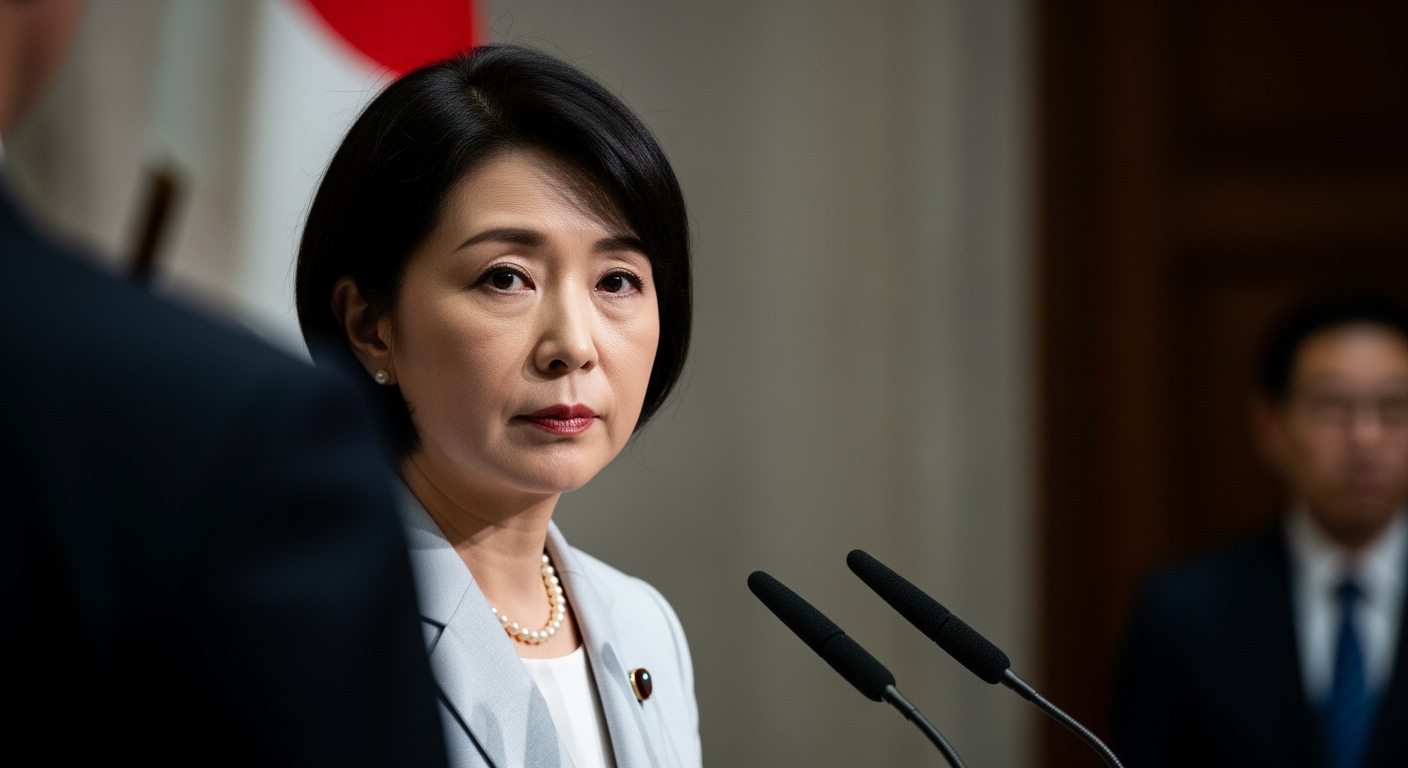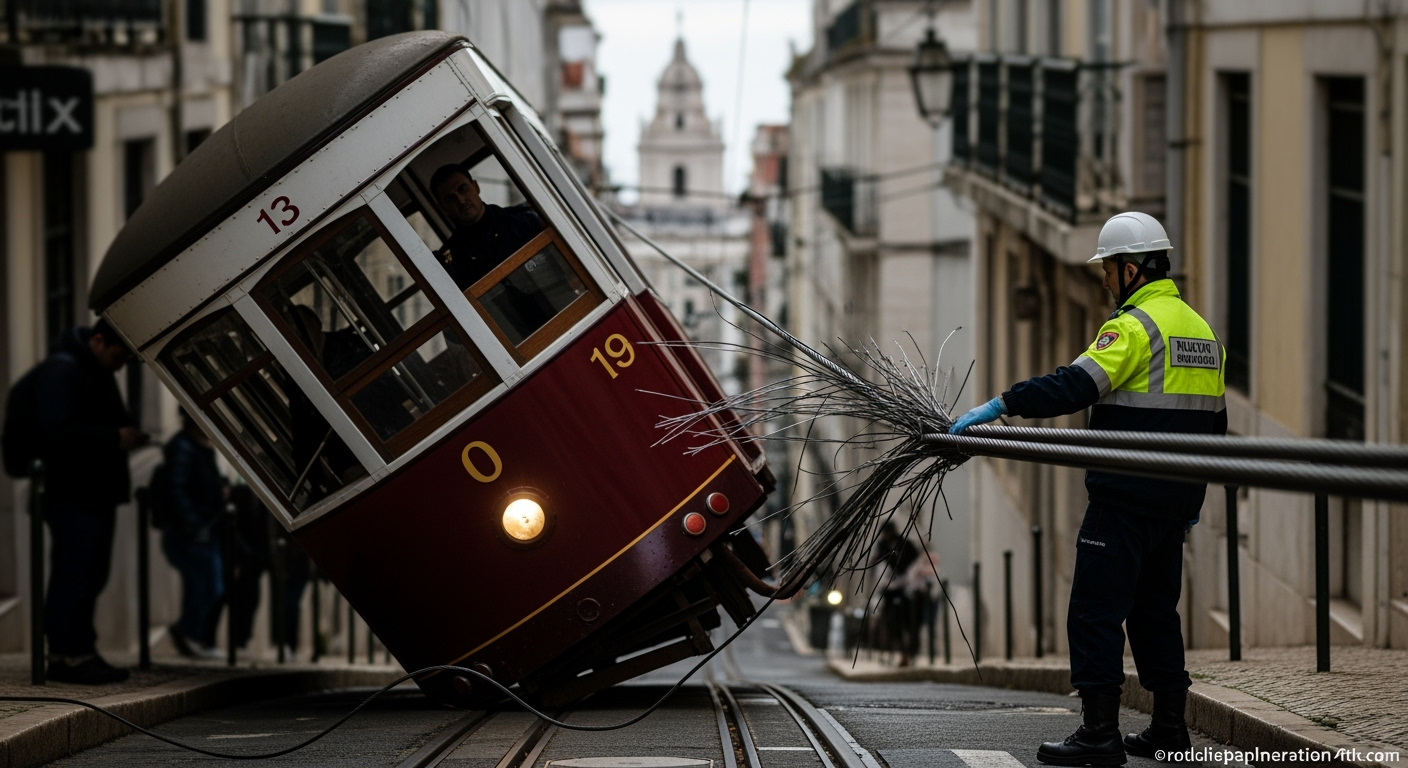Related Articles

Japan Hails Historic Moment as Sanae Takaichi Becomes First Female Prime Minister




Lisbon, Portugal – A preliminary report has revealed that a substandard cable, unfit for passenger transport, was the direct cause of the catastrophic funicular crash in Lisbon on September 3, 2025, which claimed 16 lives and injured 23 others. The findings by Portugal's Office for the Prevention and Investigation of Aircraft Accidents and Railway Accidents (GPIAAF) have ignited a fierce debate over maintenance protocols, regulatory oversight, and the safety of the city's historic transport network, currently suspended indefinitely.
The tragedy unfolded at approximately 6:04 PM WEST on September 3, when the Elevador da Glória, one of Lisbon's iconic 19th-century funiculars, suffered a critical failure. The cable connecting its two cabins snapped shortly after the upper car began its descent from Bairro Alto towards Restauradores Square. With its counterbalancing mechanism severed, the car accelerated uncontrollably down the steep 265-meter track, reaching speeds of up to 60 kilometers per hour (37 mph) before derailing and violently colliding with a building at the base of the incline. The entire horrific sequence transpired in less than 50 seconds. Emergency braking systems were reportedly activated by the operator on board, but proved ineffective without the crucial counterweight provided by the connecting cable.
The impact resulted in 16 fatalities and 23 injuries, five of which were critical. Among the victims were 11 foreign nationals, including three Britons, two South Koreans, two Canadians, and individuals from France, Switzerland, the United States, and Ukraine. Five Portuguese citizens also perished, including the funicular's brakeman and four employees of a nearby social care institution. The incident plunged Lisbon into mourning, with a national day of remembrance declared, and immediately raised urgent questions about the safety of its beloved, yet aging, public transport infrastructure.
The preliminary report, released by GPIAAF on October 20, 2025, confirmed earlier suspicions and delivered a damning indictment of the equipment and maintenance practices. The core finding was that the cable, which severed at the cabin fixing socket inside the detwister, was not only substandard but also explicitly failed to meet the specifications required for passenger transport. Investigators determined that the cable had an incompatible synthetic fiber core, deviating from the previously used steel core type, and was unsuitable for the detwister system utilized by the Glória funicular.
Further revelations from the GPIAAF report indicate a broader pattern of negligence. It stated that cables acquired since 2022 for the Glória, Lavra, and Santa Justa funiculars did not conform to technical specifications, including the grade of steel and necessary certifications. Critically, Carris, Lisbon's municipal transport operator, accepted and installed these non-compliant cables without its internal control mechanisms detecting the discrepancies. The report highlighted "procurement process failures" by Carris and inadequate internal oversight as key contributing factors. It was also revealed that Carris mistakenly provided specifications intended for the Santa Justa elevator cables to suppliers for the Glória and Lavra funiculars, a critical error that went undetected. While similar non-compliant cables had reportedly operated for over 600 days without incident on other lines, making a direct causal link to the September 3 accident complex, the report unequivocally stated the cable's unsuitability. The section where the cable broke was also not visible during routine daily visual inspections, which had reportedly occurred on the morning of the accident without detecting any anomalies.
The GPIAAF findings underscore long-standing concerns about the maintenance and management of Lisbon's historic transport systems. The report noted deficiencies in Carris's maintenance procedures and safety routines, with evidence suggesting that recorded tasks did not always correspond to actual work performed. Moreover, the external maintenance provider, MNTC Portugal, which had been contracted since 2019, reportedly operated without specialized funicular engineering staff and installed cables lacking clear technical information or quality control. Carris, in turn, failed to update maintenance execution standards and supervised installations without proper documented procedures, even as workers observed the non-compliant cable behaving differently, being more flexible, during installation.
These systemic issues did not arise without warning. For over a decade, Carris had outsourced the maintenance of its funiculars. Trade unions had consistently voiced criticism regarding this outsourcing, warning of accumulating maintenance deficiencies, including problems related to cable tension. Adding to the pre-existing concerns, just days before the tragic accident, the tender for the maintenance of Lisbon's funiculars was canceled in August 2025. This cancellation occurred because all submitted bids exceeded the budgeted value, signaling potential cost-cutting pressures that may have compromised safety. Despite these warnings and the subsequent revelations, Carris had initially maintained that all maintenance protocols had been "scrupulously followed."
In the immediate aftermath of the crash, all of Lisbon's funiculars—Glória, Lavra, and Bica—were suspended for comprehensive safety inspections. The GPIAAF report explicitly recommended that these funiculars remain out of service until inspectors can verify that their braking systems are capable of immobilizing cabins even in the event of a cable break. This recommendation highlights a critical safety gap that existed in the system design or its operational parameters.
The investigation has also brought to light a significant regulatory loophole: the Glória and Lavra funiculars, along with Carris trams, operate without independent supervision from the Institute for Mobility and Transport (IMT). They are excluded from certain national and European regulations, leaving their oversight primarily to the operating company itself. This lack of external scrutiny raises profound questions about accountability and compliance with safety standards for such vital public infrastructure. Two separate investigations are currently underway: the technical inquiry by GPIAAF and a criminal investigation by the prosecutor's office into possible negligence. The accident has prompted a broader public discourse in Lisbon about balancing the preservation of historic attractions with modern safety imperatives, and the consequences of outsourcing critical maintenance functions.
The Lisbon funicular crash serves as a stark and tragic reminder of the paramount importance of stringent safety standards, robust maintenance, and comprehensive regulatory oversight in public transportation. The preliminary findings, pointing to a substandard cable and systemic failures in procurement and maintenance by Carris, underscore the human cost of such oversights. As investigations continue and the city grapples with the implications, the tragedy necessitates a thorough re-evaluation of how Lisbon manages its cherished historical assets to ensure that a monument of heritage never again becomes a site of such profound loss. The future of Lisbon's iconic funiculars now hinges on a commitment to transparency, accountability, and an unwavering dedication to passenger safety.